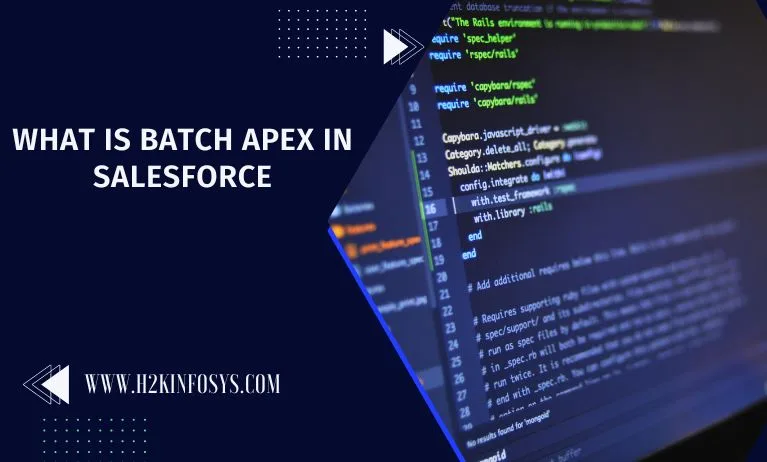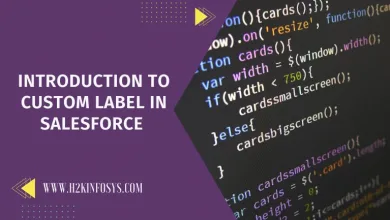What is Batch Apex in Salesforce

Developers may handle massive volumes of data in a batch with Batch Apex without running afoul of governor restrictions, which are upper bounds on things like CPU time, heap size, and database queries Salesforce.
Although it is an effective tool for developers, using Batch Apex can be difficult if you are not familiar with it. We’ll discuss what Batch Apex is, how it functions, and how to utilise it efficiently in this article. Check out the Salesforce training and placement program to learn more about Batch Apex.
What is Batch Apex?
A Salesforce feature called batch apex enables programmers to break up big data sets into smaller, more manageable parts. A type of Apex code called batch Apex can be used to asynchronously process massive amounts of data. This indicates that the code executes in the background while the user continues to use Salesforce.
In order to process huge data sets in a series of transactions, Batch Apex divides them into smaller batches of records. The results of the individual processing of each batch of records are then combined.
For big data sets that must be handled often, such as data imports or exports, data cleaning, or data cleansing, Batch Apex is extremely helpful in data cleansing, and data updates.
How does Batch Apex work?
Your Apex class must implement the Batchable interface in order for Batch Apex to function. You must implement the following three methods of the Batchable interface:

- Start: This function fetches an iterator that retrieves the data to be processed while also initialising the batch job. Every time the batch job is executed, the iterator returns a batch of records to be processed.
- Execute: Every time a batch of records is processed, this method is called. This method receives the batch of records, which you can then process however you see fit.
- Finish: After all batches have been processed, this method is called. Using this technique, you can carry out any last processing and cleanup.
The batch size and the maximum number of batches that may be handled are two additional methods and characteristics that Batch Apex offers so that you can manage the behaviour of the batch operation.
Use of Batch Apex
Here is a real-world example of how to use an Apex Batch task.

- We wish to inform the User that the Contract will expire if you can send them an email 90 days before it does.
- Depending on the contract’s expiration date, create a renewal opportunity.
- Recalculating Apex Sharing for huge data volumes is also possible using Batch Apex.
Batch Apex Example In Salesforce
Take one batch task in Salesforce as an example. If you need to edit a field across all of your organization’s accounts. Without some method of segmenting it, this is not practicable if your organization contains 10,0001 Account data.
As a result, you specify the query you’ll use in this batch context in the start() method: “Select Id from Account.”
The execute() method then executes, but it only receives a small collection of records (200 by default). Nearly all of the governor constraints only apply to that block because everything in the execute() executes in its own transactional context. You are therefore permitted 150 queries, 50,000 DML rows, etc. each time execute() is used. When execute() is finished, a new one is instantiated with the next group of 200 Accounts, with a brand new set of governor limits.
Finally, the finish() method closes any loose ends as necessary, like sending a status email.
Best Practices for Using Batch Apex
It’s crucial to adhere to a few best practices while using Batch Apex to make sure that your code runs effectively and doesn’t exceed governor constraints.
- Use smaller batch sizes: You are less likely to exceed governor limitations the smaller the batch size. 200 records is the maximum batch size advised by Salesforce.
- Check the code: Before putting your Batch Apex code into production, test it properly. Make that your code adheres to the governor’s limitations and performs as expected.
- Keep track of your batch jobs: Make sure your batch jobs are functioning properly by keeping an eye on them. You can check the status of your batch jobs on the Salesforce Batch Apex Jobs page.
- Correct errors politely: Prepare yourself to deal with any mistakes that may arise throughout the batch job’s execution. Use try-catch blocks to catch and deal with any exceptions.
Conclusion
For processing massive amounts of data in Salesforce, Batch Apex is a potent tool. Batch Apex enables developers to handle data asynchronously without exceeding governor constraints by splitting large data sets into smaller batches. With the best practices described in this blog post, you can use Batch Apex to improve your entire Salesforce experience and streamline your business processes. Check out the Salesforce Admin training and placement platform to learn more.





